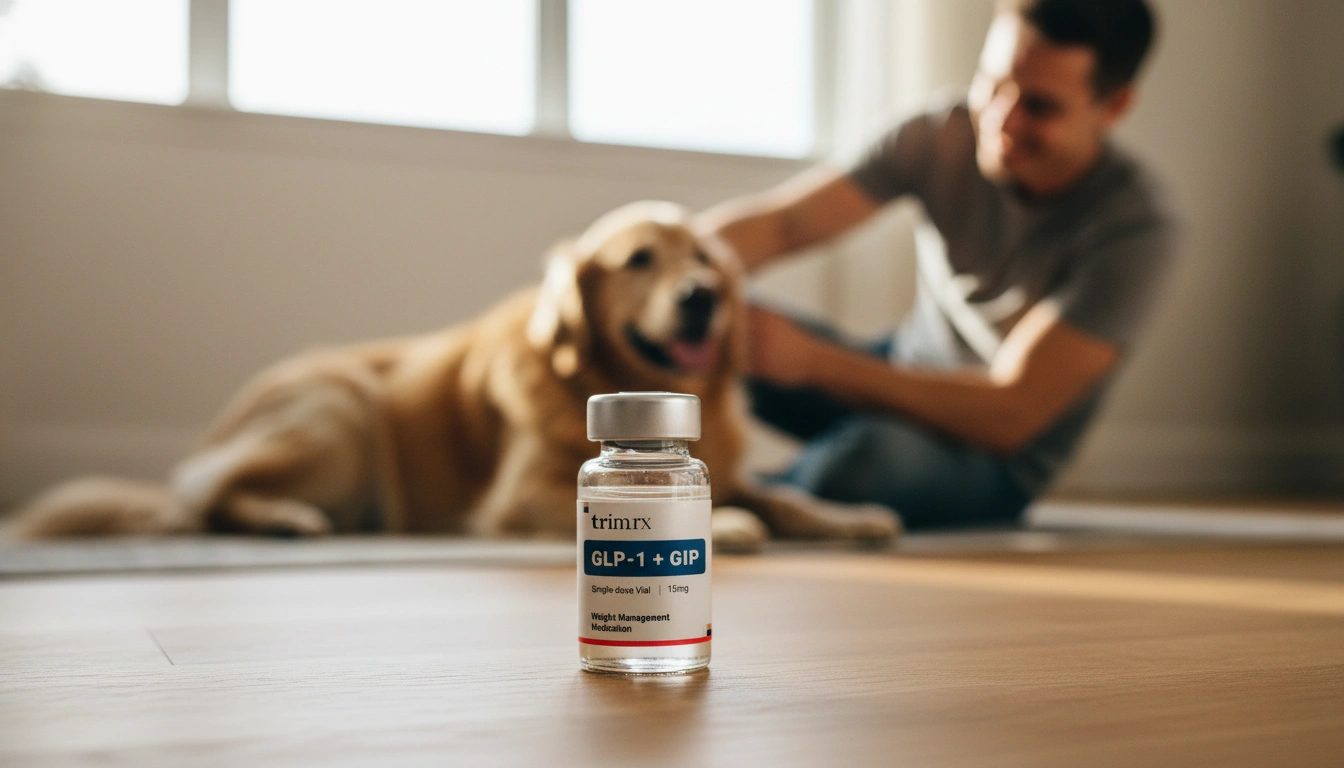Can GLP-1 and DPP-4 Be Used Together? Exploring Combination Therapy in Diabetes Management

Introduction
In the realm of diabetes management, the quest for effective treatment options is ongoing, with each year revealing new insights into how we can better control blood sugar levels. As we navigate this complex landscape, understanding the nuances of medication combinations becomes crucial. A striking statistic from the Centers for Disease Control and Prevention (CDC) highlights that over 34 million Americans struggle with diabetes, a condition that requires careful medication management. Among the various pharmacological options, Glucagon-like peptide-1 receptor agonists (GLP-1 RAs) and dipeptidyl peptidase-4 inhibitors (DPP-4 inhibitors) have emerged as prominent players, each with its unique mechanism of action.
But can these two classes of medications be used together effectively? This question is not just of academic interest; it holds significant implications for individuals managing type 2 diabetes. By the end of this blog post, we will explore the potential for combining GLP-1 and DPP-4 therapies, examining the evidence, current guidelines, and implications for patient care.
We will delve into the pharmacological profiles of GLP-1 and DPP-4 inhibitors, the rationale behind their combination, studies examining their concurrent use, and the recommendations from leading diabetes organizations. Together, we’ll uncover whether combining these therapies could pave the way for improved glycemic control, or if caution is warranted.
As we embark on this journey, we encourage you to reflect on your own experiences or those of loved ones with diabetes. Have you ever wondered about the medications being prescribed? Do you have questions about their interactions? By the end of this post, we aim to provide clarity and insight into the complex world of diabetes management.
Understanding GLP-1 and DPP-4 Inhibitors
What are GLP-1 Receptor Agonists?
GLP-1 receptor agonists are a class of medications designed to mimic the actions of the incretin hormone GLP-1, which plays a vital role in glucose metabolism. When we consume food, GLP-1 is released from the intestines, stimulating insulin secretion and inhibiting glucagon release from the pancreas. This dual action helps lower blood sugar levels while also promoting satiety and reducing appetite.
Common GLP-1 receptor agonists include:
- Liraglutide (Victoza)
- Semaglutide (Ozempic, Wegovy)
- Dulaglutide (Trulicity)
These medications not only help manage blood sugar levels but also offer additional benefits, such as weight loss, which is often a crucial component of diabetes management.
What are DPP-4 Inhibitors?
DPP-4 inhibitors are another class of antidiabetic medications that work by blocking the enzyme dipeptidyl peptidase-4. This enzyme is responsible for breaking down incretin hormones, including GLP-1. By inhibiting DPP-4, these medications increase the levels of incretin hormones in the bloodstream, leading to enhanced insulin secretion and reduced glucagon levels.
Some commonly prescribed DPP-4 inhibitors include:
- Sitagliptin (Januvia)
- Saxagliptin (Onglyza)
- Linagliptin (Tradjenta)
DPP-4 inhibitors are generally well-tolerated and do not typically cause weight gain, making them a popular choice for many patients.
The Rationale for Combination Therapy
Potential Benefits of Combining GLP-1 and DPP-4 Inhibitors
The theoretical appeal of using GLP-1 receptor agonists and DPP-4 inhibitors together lies in their complementary mechanisms of action. By enhancing GLP-1 levels through DPP-4 inhibition, one might expect improved glycemic control. This combination could potentially lead to:
- Synergistic Effects: The dual action may enhance insulin secretion and suppress glucagon more effectively than either medication alone.
- Weight Management: With GLP-1 RAs promoting weight loss and DPP-4 inhibitors preventing weight gain, this combination could be particularly beneficial for overweight individuals with type 2 diabetes.
- Convenient Dosing: Some patients may benefit from the convenience of taking medications from both classes together, provided it is safe.
Current Evidence and Recommendations
Despite the theoretical benefits, the actual evidence supporting the concomitant use of GLP-1 receptor agonists and DPP-4 inhibitors is mixed. Several studies have investigated the outcomes of combining these therapies, but the results have not consistently favored this approach.
- Lack of Robust Evidence: Research has shown that the combination does not significantly enhance glycemic control compared to monotherapy. For instance, a study indicated that while some patients experienced modest improvements, the overall impact on HbA1c levels was minimal.
- Guidelines from Diabetes Organizations: Major organizations, including the American Diabetes Association (ADA) and the Food and Drug Administration (FDA), have expressed caution regarding the use of these medications together. The ADA specifically recommends against their concurrent use due to concerns over increased side effects without additional clinical benefit.
Analyzing Clinical Studies
Case Series Insights
A retrospective chart review conducted at a healthcare clinic analyzed the effects of combining DPP-4 inhibitors with GLP-1 receptor agonists. The study included patients with type 2 diabetes who were prescribed both classes of medications. Key findings included:
- Modest Improvements in HbA1c: The results showed a slight reduction in HbA1c levels, but many patients did not achieve their glycemic targets.
- Weight Changes: Weight loss was minimal, with only a few patients experiencing significant changes.
- Adverse Effects: Some patients reported gastrointestinal disturbances, which are common with GLP-1 RAs, but the overall profile of adverse effects was not significantly different from monotherapy.
A Closer Look at Randomized Trials
While observational studies provide valuable insights, randomized controlled trials (RCTs) are the gold standard for assessing the efficacy of combinations. However, existing RCTs have not demonstrated significant advantages of combining these two drug classes over monotherapy.
For example, one trial comparing the addition of a GLP-1 RA to a DPP-4 inhibitor versus switching therapies found only marginal improvements in glycemic control without notable weight benefits.
Current Guidelines and Recommendations
ADA and FDA Stance
Both the ADA and FDA have issued guidelines recommending against the use of GLP-1 receptor agonists and DPP-4 inhibitors in conjunction. The rationale includes:
- Increased Risk of Side Effects: The combination may heighten the risk of gastrointestinal side effects such as nausea and vomiting, which are already prevalent with GLP-1 therapies.
- Cost-Effectiveness Concerns: From a healthcare perspective, the combination therapy does not provide sufficient clinical benefits to justify the potential increase in medication costs and side effects.
Alternative Strategies for Diabetes Management
Given the limitations of combining GLP-1 and DPP-4 therapies, patients and healthcare providers should consider alternative strategies for managing diabetes. These may include:
- Monotherapy: Utilizing either GLP-1 receptor agonists or DPP-4 inhibitors alone, depending on individual patient needs and preferences.
- Incorporating Other Antidiabetic Agents: Exploring the use of other classes of medications, such as sodium-glucose cotransporter-2 (SGLT-2) inhibitors or insulin, based on specific patient profiles.
- Lifestyle Modifications: Emphasizing the importance of lifestyle changes, including diet and exercise, which can significantly impact blood sugar levels and overall health.
Conclusion
As we explore the intersection of GLP-1 receptor agonists and DPP-4 inhibitors in diabetes management, it becomes clear that while the theory of combination therapy holds appeal, the evidence supporting its efficacy is lacking. Both the ADA and FDA advise against the concurrent use of these medications, highlighting the importance of patient safety and the need for effective treatment strategies.
In our journey through this complex topic, we have learned that effective diabetes management is multifaceted, requiring a personalized approach that considers the unique needs and circumstances of each patient. As we strive to improve outcomes for individuals with diabetes, continued research and adherence to evidence-based guidelines will be paramount.
If you or someone you know is navigating the challenges of diabetes, remember that exploring personalized weight loss solutions can also play a significant role in managing this condition. At TrimRx, we are committed to helping individuals embrace healthier lifestyles through science and empathy. Together, we can work toward achieving sustainable weight loss and better health outcomes.
FAQ
Can GLP-1 and DPP-4 inhibitors be used together safely?
While some studies have explored the combination of these medications, major health organizations recommend against their concurrent use due to potential side effects and lack of additional benefit.
What are the main benefits of GLP-1 receptor agonists?
GLP-1 receptor agonists promote insulin secretion, inhibit glucagon release, enhance satiety, and can lead to weight loss, making them valuable in managing type 2 diabetes.
Are there alternatives to using GLP-1 and DPP-4 inhibitors together?
Yes, alternative strategies include using either medication alone, incorporating other antidiabetic agents, and emphasizing lifestyle changes such as diet and exercise.
What should I do if I am currently taking both medications?
Consult your healthcare provider for personalized advice on your medication regimen. They can help determine the best course of action based on your health needs.
How can I find support for my diabetes management?
Consider reaching out to healthcare providers, diabetes support groups, or platforms like TrimRx that offer personalized weight loss solutions and guidance for managing diabetes effectively.

Transforming Lives, One Step at a Time
Keep reading
Vitamin B12 and GLP-1 Medications: What to Know
GLP-1 medications can lower B12 absorption and intake; learn symptoms, food sources, supplement options, and how to monitor levels.
Semaglutide Injection Site Reactions: What To Know
Learn why semaglutide injections can cause redness, swelling or nodules, how to prevent and treat them, and when to seek medical care.
TrimRx vs Friday’s
Compare TrimRx and Friday’s telehealth GLP-1 weight-loss programs: pricing, medical support, coaching, delivery, and which fits your needs.



